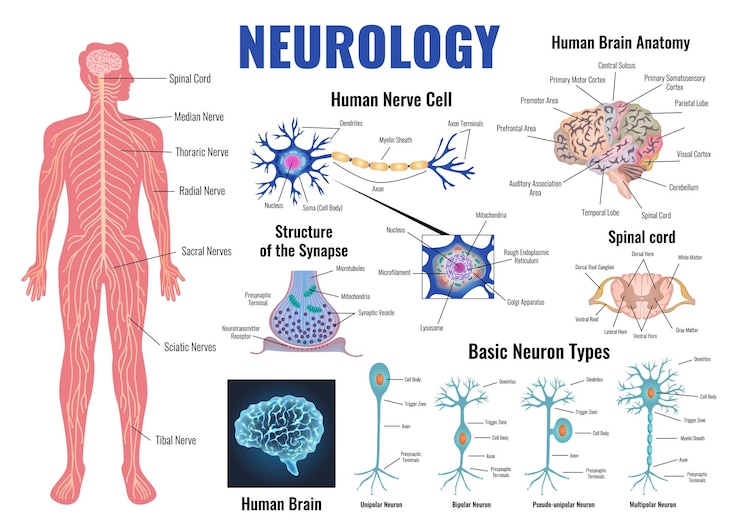Millions of people worldwide suffer from Lou Gehrig’s disease, also known as amyotrophic lateral sclerosis (ALS), one of the most terrifying neurological conditions. The brain and spinal cord’s motor neurons, which regulate voluntary muscle movements like walking, talking, and even breathing, are gradually destroyed by ALS. Muscle tissue weakens and eventually atrophys as a result of these motor neurons’ loss of communication with the muscles as they degenerate.
The renowned baseball player Lou Gehrig, who was diagnosed with ALS in the 1930s, is the inspiration behind the name of this progressive disease. Because of its quick progression and significant impact on a person’s capacity to live independently, ALS is one of the most debilitating diseases, even though it only affects about 5 out of 100,000 people. People with ALS not only lose their physical capabilities but also their ability to control their own bodies, which makes daily life difficult.
| Lou Gehrig’s Disease (ALS) Overview | Details |
|---|---|
| Full Name: Amyotrophic Lateral Sclerosis (ALS) | Named After: Lou Gehrig, Hall of Fame baseball player |
| Symptoms: Muscle weakness, difficulty speaking and breathing | Cause: Degeneration of motor neurons |
| Progression: Rapid and progressive, often leading to death within 2-5 years | Treatment: No cure; symptom management available |
| Prevalence: Affects around 5 in 100,000 people | Research Focus: Genetic factors, environmental triggers |
ALS Symptoms: A Constant and Steady Decline
Most patients first notice muscle twitches or cramps, which are deceptively subtle early signs of ALS. These symptoms develop into more noticeable muscle weakness as the disease worsens, affecting the hands, legs, neck, and face, among other areas. Communication can be difficult for many patients as basic skills like speaking, chewing, and swallowing become more difficult.
The impact of ALS on breathing is among its most upsetting features. Patients may need mechanical devices, like ventilators, to support their breathing as their breathing muscles deteriorate. Respiratory failure is the primary cause of death in ALS, which is still lethal. Despite the disease’s inexorable nature, patients now have some hope thanks to improvements in healthcare that have made it possible to manage symptoms.
Examining Lou Gehrig’s Disease’s Causes: Our Current Understanding
Researchers have made great strides in their understanding of ALS, despite the fact that its precise causes are still unknown. A genetic mutation has been found to cause ALS in approximately 10% of patients. Familial ALS is a genetic form of ALS that is inherited, meaning that those who have it have a 50% chance of passing the gene on to their offspring.
The disease is categorized as sporadic, meaning the cause is not inherited, for the remaining 90% of ALS cases. Numerous environmental factors, such as smoking, exposure to toxins, and even military service, have been proposed as possible causes. According to studies, veterans of the armed forces are more vulnerable, possibly as a result of physical strain and exposure to dangerous chemicals.
The Diagnosis Process: An Intricate and Unpredictable Path
Making an ALS diagnosis can be a difficult and uncertain process. At first, ALS symptoms could be written off as indicators of mild neuropathies or repetitive strain injuries, which are less serious conditions. But as the illness worsens, the diagnosis becomes more obvious. To measure the electrical activity in muscles and evaluate the condition of motor neurons, doctors use tests like electromyography (EMG) and nerve conduction studies.
A conclusive diagnosis of ALS may take some time due to its complexity. It frequently entails ruling out other illnesses with comparable symptoms, like spinal cord tumors, multiple sclerosis, and Lyme disease. An early diagnosis is essential for putting the best symptom management techniques into practice, even though the process could take some time.
The Difficulty of Treating ALS: Managing Symptoms and Hope for the Future
As of right now, ALS has no known cure. Nonetheless, the U.S. Food and Drug Administration (FDA) has approved a number of medications that can help control symptoms and slow the disease’s progression. Although they don’t cure the disease, drugs like riluzole and edaravone have shown some promise in extending life and slowing the rate of decline.
Although there isn’t a cure, there is hope thanks to ongoing research. To possibly stop or reverse ALS, researchers are looking into gene therapies, stem cell treatments, and novel neuroprotective medications. Even though new discoveries are still being made, they move us one step closer to better therapies and, eventually, a cure.
ALS Living: The Value of Support Networks
There are significant emotional, psychological, and physical obstacles to overcome when living with ALS. As the illness worsens, patients and their families frequently struggle with the psychological and emotional effects. Fortunately, palliative care, therapy, and ALS support groups can give patients the tools they need to continue living well.
As the illness progresses, communication becomes one of the biggest obstacles. With the use of speech-generating devices, many ALS patients rely on technology to help them communicate and keep in touch with their loved ones. Even as their physical capabilities deteriorate, these advancements enable patients to maintain relationships and participate in their communities.
ALS Advocacy and Research: Toward a Cure
Because of the unwavering efforts of researchers, medical professionals, and advocacy organizations, the battle against ALS is still ongoing. By raising millions of dollars for research, the ALS Ice Bucket Challenge raised awareness of the disease and its terrible consequences all over the world. In order to better understand the genetic and environmental causes of ALS, these funds are currently being used to support important research.
Sustained advocacy work is essential to maintaining the momentum. The ALS community is still advocating for better access to treatments, more public awareness, and more funding for research. It’s critical to keep in mind that every advancement advances our chances of ALS becoming a treatable illness rather than a death sentence in the future.


